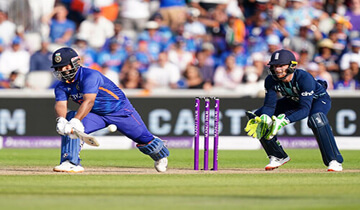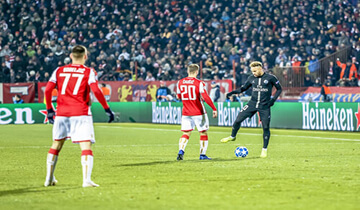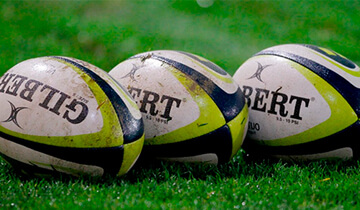It’s hard to imagine, but Major League Baseball goes through around 900,000 baseballs every season! For a sport that revolves around one simple ball, that number may seem shockingly high. This article will take an in-depth look at just how many baseballs are used in an MLB game, season, and the various factors that contribute to this surprisingly large number. From balls fouled off into the stands, to those taken out of play due to scuffing or discoloration, we’ll cover all the ins and outs of baseball usage in America’s pastime. By the end, you’ll have a whole new appreciation for the humble hardball and the logistics required to keep supplies steadily stocked for the boys of summer. So grab your glove and get ready to cover all the bases of baseball usage in the big leagues!
Average Balls Used Per MLB Game
Foul Balls
So just how many baseballs are used in a typical Major League Baseball game? According to the Elias Sports Bureau, an average of around 65-70 baseballs are used per 9-inning game. While this may seem like a high number, several factors contribute to this substantial ball usage.
First, foul balls account for a significant percentage of baseballs used per MLB game. On average, around 30-40 foul balls occur every game, many of which go directly into the stands as souvenirs for fans. Since these balls are technically still in play when fouled off, they must be discarded and replaced with new balls after being rubbed and handled by spectators.
Home Runs
In addition to foul balls, home runs also contribute to ball usage. An average of 2-3 home runs are hit out of the park in a typical MLB game, each requiring the use of a fresh, new ball when play resumes.
Pitcher Preferences
Pitcher preferences and superstitions also play a role, as hurlers will frequently ask for new balls if they feel a certain ball has led to hits or other unfavorable results.
Scuffed and Discolored Balls
Finally, balls that have been scuffed or discolored after being in play must be replaced as well. All of these factors combine to contribute to around 60-70 balls used on average per 9-inning professional baseball game.
Interesting fact: Interestingly, when pondering the origins of this beloved sport, one might wonder, “Where was baseball invented?” The answer to this question lies in the rich history of the game that continues to captivate fans around the world.
Why So Many New Balls are Needed
With 60-70 balls being used every game, it’s clear MLB goes through a lot of baseballs over a season. But why is it necessary to use so many new balls in an average game?
There are a few key reasons. For one, balls naturally become dirty and scuffed as they are thrown repeatedly, hit by bats, and handled by players and umpires. MLB regulations require dirty or scuffed balls to be removed from play and replaced to ensure fairness and proper gameplay.
Additionally, a significant number of balls get hit foul into the stands as souvenirs for fans. MLB rules state that any ball that goes out of play must be discarded and substituted with a new ball when play resumes.
Pitchers also frequently request new balls be rotated in if they feel a certain ball has led to hits or other negative outcomes. Pitchers are very particular about the balls they throw, so new ones are continuously fed into the game at their request.
Finally, using brand new balls ensures consistency and fairness in gameplay. Regulations require frequent replacement with new balls to maintain the highest quality and integrity of play. So while it may seem excessive, all those new balls are essential for meeting MLB standards.
Total MLB Season Estimates
Number of Games Per Season
So just how many baseballs are used over the course of an entire MLB season? Let’s crunch the numbers.
There are 30 teams in Major League Baseball, with each team playing 162 regular season games. This comes out to a total of 2,430 games in a typical MLB season.
Estimating Total Balls Used
Given the average of 60-70 balls used per 9-inning game, if we take the lower end of 60 balls multiplied by the 2,430 total games, that comes out to 145,800 balls used in one MLB season.
On the higher end, if we estimate 70 balls per game over 2,430 games, that results in 170,100 balls used over a full season.
So we can estimate that somewhere between 150,000-170,000 baseballs are used over the course of a single MLB season! That’s a staggering amount of baseballs being purchased, packaged, shipped, and put into play each year to keep up with demands.
MLB Ball Production and Costs
Annual Production
To keep up with the high number of balls needed for MLB games, a tremendous amount of production and expense goes into supplying the league each season.
The official ball supplier of Major League Baseball is Rawlings Sporting Goods, which produces around 2.4 million baseballs per year just to meet MLB’s regular season demands.
Cost Per Ball and Total Season Estimates
Each of these Rawlings balls costs $15-20 to produce. With MLB going through 150,000-170,000 per season, that results in a total estimated cost of $2-3 million dollars spent annually just on baseballs!
Effort Required
From the raw materials and hand-stitching, to quality control and shipments to ballparks across the country, a monumental amount of coordination goes into supplying the baseballs used in MLB action.
So while we normally just think of it as a simple ballgame, a closer look reveals the intricate preparations and costs involved in providing the balls that keep America’s pastime in play!
Differences in the Minors and Spring Training
Minor League Baseball
While Major League Baseball goes through an enormous amount of balls each season, not all leagues require the same amount of baseballs.
In Minor League Baseball, which acts as a development system for the majors, ball usage is much lower. Minor league teams use around 12 dozen balls per home game on average. This allows for significant cost savings compared to the MLB’s higher rates of usage.
Spring Training
Additionally, ball usage drops during spring training before the regular season opens. With shorter spring games and lower fan attendance, not as many balls are needed overall.
So while the majors require around 900,000 balls each season, usage numbers are scaled down greatly for minor league and preseason baseball. This helps keep costs under control and prevent excess waste.
The next time you’re at minor league or spring training game, take note of the more careful conservation of baseballs compared to the major league’s freer rates of hardball consumption!
The Life of an MLB Baseball
A baseball goes through quite a journey from factory to field over the course of an MLB game. Here’s a look at the typical life cycle:
Pre-Game Prep
Before first pitch, umpires inspect and approve game balls, checking for proper weight and dimensions. Balls are rubbed with special Delaware River mud to improve grip and control.
In-Game Use
During games, MLB balls are generally replaced after they become scuffed or discolored, or about every 100 pitches on average. Pitchers frequently request new balls as well.
Reasons for Replacement
Balls are swapped out when they get hit into the stands or dugouts, land in dirt or substances, or if pitchers complain about grip or shape. Umpires closely inspect and replace balls to maintain fair play.
Post-Game Handling
After games, authentically used balls are inspected, authenticated with holograms, and may be sold as collector’s items. Other used balls are recycled or repurposed for batting practice.
So while it may seem simple, official MLB baseballs go through a regimented process from approval to retirement over their short active lifespan!
Notable Game & Record Examples - Extreme Ball Usage Examples
Long Extra Inning Games
While the averages give us a good estimate, there have been some extreme cases of baseball usage that really illustrate just how many balls pass through a given MLB game.
In one record-setting example, the San Diego Padres used a staggering 175 baseballs in a single 15-inning game against the Colorado Rockies in 2013. pitchers went through ball after ball as the marathon game stretched on.
Home Run Barrages
In 2016, the Chicago Cubs burned through 143 baseballs in a regular 9-inning match against the Milwaukee Brewers. Balls were flying out of play at historic rates that game.
All-Time Single Game Record
The all-time single game record is held by a 1969 contest between the Mets and Expos that required a head-spinning 198 balls! Pitching staffs on both sides went to town on the supply.
So while 60-70 is the average, those numbers can skyrocket during lengthy extra-inning affairs or home run barrages. MLB officials have to be prepared for any possibilities on a given game day.
Conclusion
Key Takeaways
As we’ve seen, the life of a Major League baseball is short but action-packed. While we may take them for granted, the numbers reveal how many balls are truly used over the course of an MLB season.
From the 60-70 balls used per game, to the 150,000+ used annually, baseball production requires massive coordination and expense to meet the sport’s demands. Yet each ball costs relatively little individually.
Symbolism of the Baseball
Beyond the costs and logistics, there is something nostalgic about the central role of a simple ball in America’s pastime. Though it only lasts a few pitches, the baseball takes a long journey from factory to field to bring joy and tradition to generations of fans.
So the next time you watch an MLB game, appreciate the humble baseball and its symbolic role as the heart of the sport we love. And remember - that little ball has a big story behind it!







































